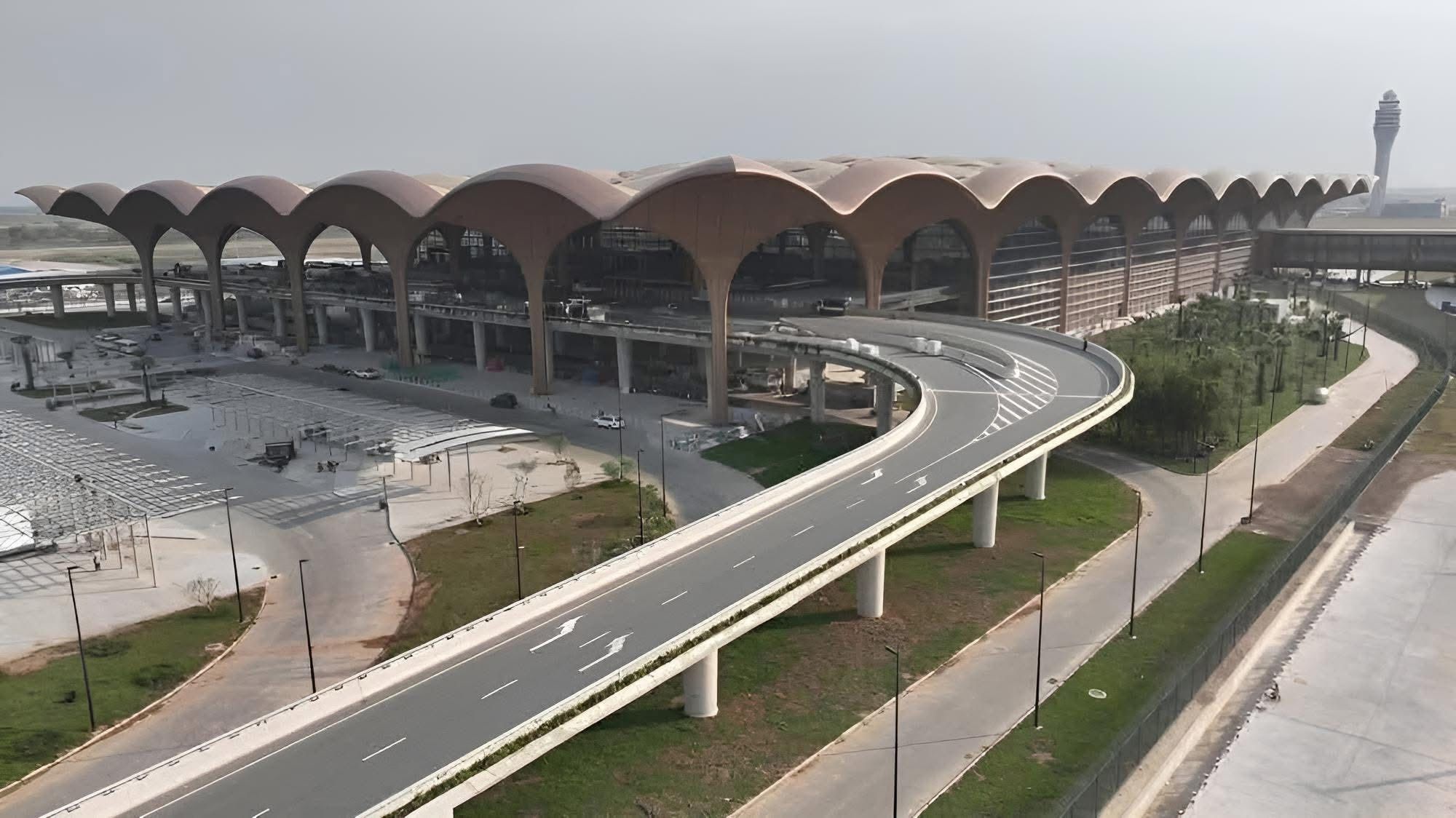
Phnom Penh, Cambodia — Cambodia is preparing to unveil one of the most ambitious infrastructure projects in its modern history. Spanning 2,600 hectares and featuring sweeping Khmer-inspired architecture, the Techo International Airport is nearing the final stages of construction, with operations scheduled to begin in July 2025, according to the State Secretariat of Civil Aviation (SSCA).

Located approximately 30 kilometers south of the capital, Phnom Penh, the new airport is poised to become one of the largest in the world by land area and a major gateway to Southeast Asia. With its first phase now 95 percent complete as of March, the airport is on track to begin welcoming passengers just months from now.
Once operational, the Techo Takhmao International Airport (TIA) is projected to handle between 13 and 15 million passengers annually, along with up to 175,000 tons of cargo. The scope and ambition of the project place it among the top 10 largest airports globally after its initial development phase — a major leap for Cambodia’s civil aviation sector.

“This is a transformative project for our country,” said Peng Ponea, Cambodia’s Minister of Public Works and Transport. “Techo International Airport is not only about enhancing connectivity, but about signaling to the world that Cambodia is ready to compete as a regional logistics and travel hub.”
Designed to ICAO 4F standards, the airport can accommodate some of the world’s largest aircraft, including the Airbus A380 and Boeing 747. Future expansion plans are already in motion: Phase 2, expected by 2030, will boost capacity to 30 million passengers per year, and Phase 3, by 2050, is projected to raise that number to 50 million.

The airport straddles three administrative zones — Prek Sleng commune in Kandal province, Takhmao city, and Bati district in Takeo province — integrating regional infrastructure and positioning itself as a major aviation hub in ASEAN.
Architecturally, the terminal pays homage to Cambodia’s cultural heritage while embracing cutting-edge design. The space will be equipped with modern security, passenger processing, and logistics systems to meet global standards.

Economists see TIA as a pivotal development in Cambodia’s bid to recover post-pandemic and reduce dependency on neighboring transit points. “This could redefine Cambodia’s position in regional air transport, especially in terms of tourism, investment, and cargo,” said Chan Dara, a Phnom Penh-based transport analyst.
While the project has drawn praise for its economic potential, it has also faced criticism from environmental groups concerned about land use and ecological disruption. Government officials have promised sustainability protocols and measures to mitigate long-term impacts.

As the country counts down to its July opening, Techo International Airport is not just being watched as a national infrastructure milestone—it’s being viewed as a bold symbol of Cambodia’s future ambitions.
Follow The Mekong Times for exclusive regional updates, in-depth political analysis, and editorial investigations into Southeast Asia’s most pressing security concerns.